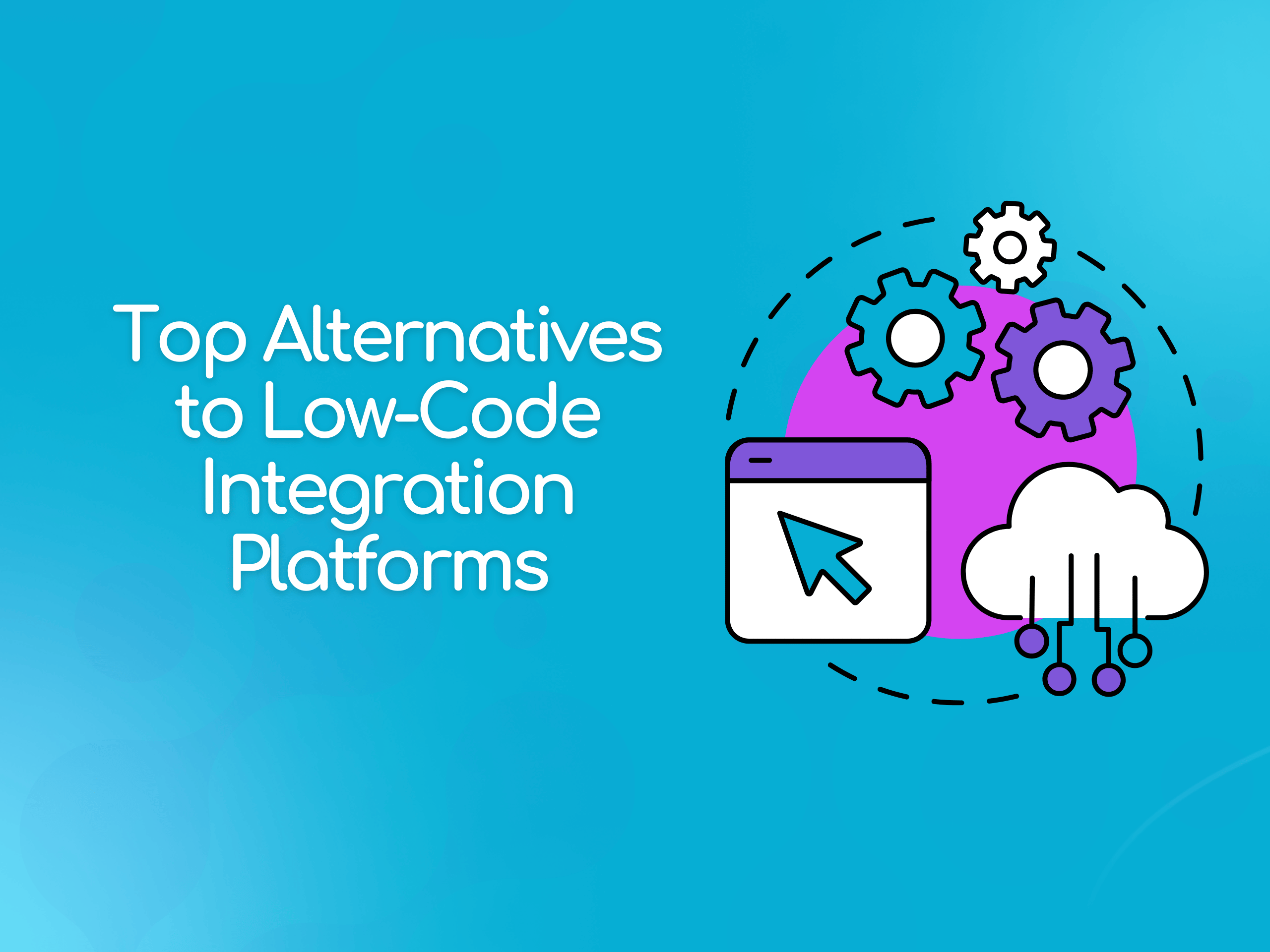How In-App Marketplaces Create a Competitive Advantage for B2B SaaS

Organizations are using more applications than ever and with tens of thousands of applications to choose from, the average tech company is using 155 apps.
While this software explosion has been a boon of functionality, it has also caused problems. Business users have to spend more time moving from one app to another, downloading and uploading data, and patching together their applications. This process is frustrating and costly.
No matter what industry or vertical you operate in, your customers need to use your SaaS application with their other software - and they want to be able to do this without having to manually transfer their data, or persuade their IT department to build custom integrations.
The solution?
Build an in-app marketplace with embedded integrations. In-app marketplaces empower your customers to seamlessly connect to their other software without ever leaving your app. This integrated ecosystem around your core product significantly enhances the power and functionality of your app without requiring you to build more features.
In the rest of this article we'll go into further detail on why SaaS companies should invest in building an in-app marketplace and the benefits.
%252520(1).avif)
Why Should B2B SaaS Build an In-App Marketplace?
Generating Revenue Through B2B Ecosystem Marketing
Ecosystem Marketing via B2B app marketplaces may be one of the biggest opportunities in SaaS today. A public and in-app marketplace is an attractive marketing channel to both organizations and their partners, as solutions can be showcased in front of a targeted customer base presumably in their ICP.
If you’re a smaller company, being part of a marketplace, or having partners with well known, credible brands integrate through your marketplace, can serve as social proof and allow you to capitalize on their user’s trust.
As a larger or mid-sized organization, you can showcase how much of a connected experience you can offer to your customer.
Along with marketing your interoperable capabilities to potential vendors, marketplaces enable organizations to educate their customer base on their ecosystem, it's apps, and how they can utilize them to meet their needs. Some marketplaces even offer marketing analytics that can offer new insights into customer app behavior on the marketplace and with specific integrations.
Multiple forms of content can be added to marketplaces to enhance, extend, or customize a platform’s functionality, and educate customers on how your product will simplify their tech stack and make their lives easier.
Related content: Marketing Integrations and Tech Partnerships: Everything You Need to Know
SEO & Lead Generation
When a marketplace is optimized for SEO and lead capture via forms on the marketplace, can contribute to attracting qualified leads actively seeking those products and services. This contributes to:
Increased Visibility
A marketplace that showcases integrations with popular and relevant systems attracts more organic traffic to the platform from potential customers searching for those products or services.
Targeted Traffic
Optimizing for specific keywords related to the marketplace's offerings helps attract qualified leads actively seeking those products or services. This targeted traffic is more likely to convert into paying customers.
Collecting Qualified Leads
Strategically placed lead capture forms on the marketplace or integration tiles enable the collection of user information. This data can include contact details, preferences, and specific needs, offering insights into potential customers.
Personalized Marketing
With the information gathered from marketplace analytics or lead capture forms, personalized marketing campaigns become possible, improving integration adoption and increasing the chances of converting leads into customers.
The SaaS companies that grow the most rapidly are those that allow others to build on their platform (ex. Shopify), or are embeddable into other platforms (ex.Grammarly), or allow for both (ex. Stripe).
If you’re in B2B tech, you probably offer at least one app or tool or widget in at least one of the app marketplaces out there. If your products can in any way be described as a platform, it's a good idea to run your own marketplace too.
Control and Improve Your Customer UX
B2B loyalty is up for grabs, and customers are more willing than ever to switch suppliers. Whether your customers need to integrate your app with 5 or 5,000 other solutions, building an in-app marketplace allows you to control and improve the UX of your customers’ integration experience.
Without an in-app marketplace, customers may have to contact support every time they want to install or troubleshoot an integration, which isn’t ideal. If your company relies on a tool like Zapier to offer integrations (or any other integration platform tool that doesn't offer an in-app marketplace experience) customers might be required to learn a visual builder interface. This can be time-consuming or difficult for them depending on their technical skill level. This often leads to a frustrating experience, leaving them dissatisfied and reaching out to customer support for help.
Additionally, if your company is uses an integration platform tool (iPaaS) that is not embedded in your app, like in the case of Zapier or Integromat, customers have to leave your app to install, manage, and pay for their integrations – leaving the customer experience entirely out of your control. This leaves the possibility of lackluster support that organizations have limited control over.
Establish Competitive Advantage
Whether a product is designed to be embedded in hundreds of other systems (ie.Twilio) or designed for hundreds of systems to run on it (ie.SalesForce), companies who offer their customers a seamless integration experience are able to leverage an entire ecosystem of products to increase adoption, attract new leads, decrease customer churn, and increase upsells.
In the eCommerce space alone, B2B marketplaces have already become a big growth driver. By 2024 it’s predicted that B2B marketplaces sales could reach an estimated 3.4 trillion USD according to the Digital Commerce 360 report.
Unless features are considered a core competency of your product, providing integrations with existing product would allow you to meet customers needs in less time with fewer resources. Customer tested integrations in addition to an in-app marketplace enables SaaS companies to highlight consumer-ready software solutions, making finding impactful solutions easier and faster for customers.
Recent Data on Public and In-App Marketplaces
In a 2022 study of APIs, integrations and app marketplaces at 400 SaaS Companies, at least 73% of the 100 largest SaaS companies offer an in-app marketplace to customers where they can discover and install apps.

86% of those companies offer a public marketplace to showcase and educate users and prospects on their integration offerings. These companies also offer an average of 621 integrations and a median of 94 integrations. From the data it's clear that it is not only large or top 100 companies who see the value and are making the choice to invest in app marketplaces. Even 31% of seed stage companies in this data set have a public marketplace despite only having a median of 5 integrations.
This can demonstrate that even early stage businesses see the value of integrations to customers - even if they can’t yet deliver many yet.
Need Support With Building Your In-App Marketplace?
At Pandium, we support our customers everyday with building and launching integrations via our Integration Platform and customizable, out-of-the-box In-App Marketplace.
Schedule time to talk with our team to learn how we can help you your team get build an In-App Marketplace experience for your customers.
From the Blog

Why 2026 Is Becoming a Defining Year for AI Systems and Integrations

